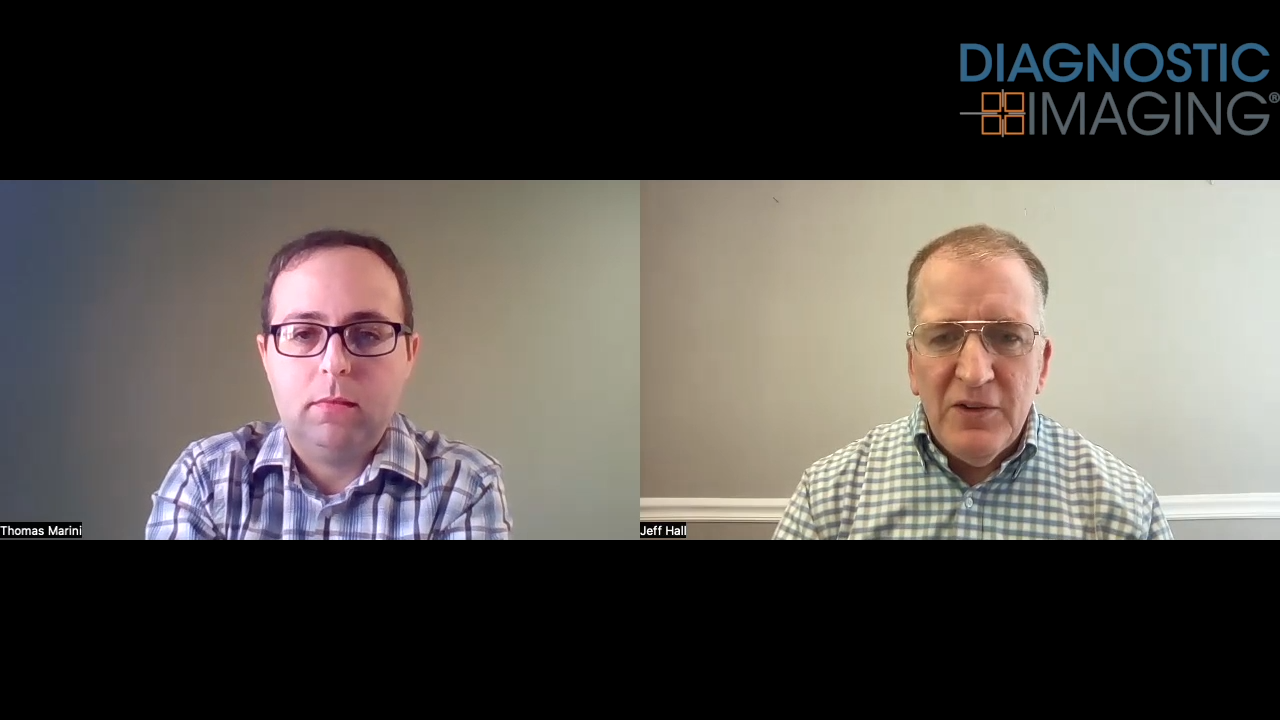Image-Guided Biopsy Picks Up Lingering Breast Cancer
Standard image-guided, vacuum-assisted biopsy can accurately identify remaining cancers in some patients with a less than 5 percent false negative rate.
Breast cancer patients who have image-guided biopsies after being treated with neoadjuvant chemotherapy (NACT) can potentially avoid surgery, new research has revealed. These procedures can effectively pick up on any lingering cancers.
In a study published Oct. 7 in JAMA Surgery, a team of investigators from Royal Marsden NHS Foundation Trust in London, demonstrated that standard image-guided, vacuum-assisted biopsy (VAB) could either identify residual cancers or predict complete pathologic response. And, the procedures could do so with a false-negative rate of less than 5 percent.
“Post-neoadjuvant chemotherapy image-guided biopsy may identify pathologic complete response in the breast in selected patients,” said the team led by Marios Konstantinos Tasoulis, M.D., Ph.D., consultant oncoplastic breast surgeon with Royal Marsden. “These findings can inform the design on de-escalation trials testing the elimination of surgery in exceptional responders.”
In particular, the team said, using this biopsy technique to gather at least six representative samples of a residual breast imaging abnormality or tumor bed that is no larger than 2 cm can reliably pinpoint which patients do not have lingering disease after NACT.
For more coverage based on industry expert insights and research, subscribe to the Diagnostic Imaging e-newsletter here.
Use of NACT is becoming more widespread with early-stage breast cancer. Simultaneously, image-guided percutaneous biopsy of the residual imaging abnormality or tumor bed after NACT is becoming a more popular predictive tool. Not only can it potentially identify which patients respond well enough for a de-escalation of local therapy, but it can also facilitate risk-adaptive surgery. Given its potential, Tasoulis’s team set out to determine just how well the image-guided biopsy identifies lingering cancers in the breast.
To reach a determination, the team analyzed 166 patients who had undergo image-guided biopsy before having surgery in one of three institutions – Royal Marsden Hospital, MD Anderson Cancer Center in Houston, and Seoul National University Hospital in South Korea. The team used final surgical pathology as the reference standard for diagnostic accuracy.
Overall, 143 women received image-guided VAB. The remaining 23 underwent core-cut biopsies. Providers used ultrasound guidance in 129 patients (77.7 percent) and stereotactic guidance with 37 patients (22.3 percent). Patients underwent anywhere from two to 18 biopsies, but the average number was six, the team said.
Based on their analysis, the false-negative rate among the 159 patients who had image-guided biopsy was 18.7 percent. This outcome appears strongest in the 76 patients who had a complete or partial clinical-treatment response, as well as a residual imaging abnormality of 2 cm or smaller with at least six VAB samples.
Ultimately, the team said, these outcomes could change treatment plans for some patients.
“This large multi-center pooled data analysis suggests that a standardized protocol using image-guided VAB of a tumor bed measuring 2 cm or smaller with six or more representative samples allows reliable prediction of residual disease,” the team said. “These results could inform the design of de-escalation trials in NACT exceptional responders testing the safety of eliminating surgery.”
The Reading Room: Racial and Ethnic Minorities, Cancer Screenings, and COVID-19
November 3rd 2020In this podcast episode, Dr. Shalom Kalnicki, from Montefiore and Albert Einstein College of Medicine, discusses the disparities minority patients face with cancer screenings and what can be done to increase access during the pandemic.
What New Research Reveals About Novice Use of AI-Guided Cardiac Ultrasound
April 4th 2025In a study recently presented at the American College of Cardiology (ACC) conference, researchers found that novice use of AI-guided cardiac ultrasound after an AI-enabled electrocardiogram increased the positive predictive value for reduced left ventricular ejection fraction (LVEF) or aortic valve stenosis by 33 percent.










